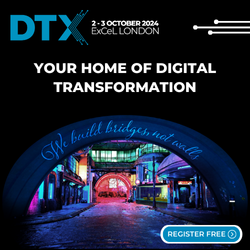Why Your Organization Needs a Dedicated Anti-Ransomware Solution
June 14, 2024 No CommentsIt would have been impossible to read the news over the last few months without seeing headlines littered with articles about the breach of Change Healthcare, a subsidiary of UHG, one of the largest healthcare providers in the US. Change Healthcare processes billions of dollars in insurance to healthcare providers, and the attack caused major disruption to patient care as well as financial hardship for healthcare providers.
The incident nearly brought the U.S. healthcare system to its knees, exposed the personal data of millions of patients, and even resulted in delayed care or the hospitalization of patients. More recently, UnitedHealth Group reported $872 million in recovery costs for Q1-2024 due to “unfavorable cyberattack effects,” and is expected to spend as much as $1.6 billion for remediation.
This underscores a harsh reality: ransomware operators have zero conscience; their intention is to cause as much pain as possible because more pain for the victims translates into bigger paydays for the attackers.
Understanding Ransomware
Once a simple spray-and-pray tactic that compromised individuals, ransomware attacks have evolved into a sophisticated threat on par with nation-state APT operations, targeting businesses of all sizes across all industries.
It is malicious software designed to block access to a computer system or data, usually by encrypting it, until a ransom is paid. Over the years, ransomware attacks have become more complex, from simple encryption schemes to advanced tactics like double and triple extortion.
In double extortion, attackers not only encrypt data but also steal it, threatening to release sensitive information unless the ransom is paid. Triple extortion further pressures victims by targeting their clients or partners, creating a cascading effect of demands and threats aimed at exerting enough pressure to make the victim pay up.
The impact of these attacks is far-reaching, too:
– Financial Damage: Ransom payments can be exorbitant, sometimes reaching millions of dollars. Even if the ransom is paid, the costs associated with downtime, recovery, and potential legal fees add up quickly. IBM’s Cost of a Data Breach 2023 report revealed that the average cost of a data breach caused by a ransomware attack was $5.13 million, which is higher than the global average for data breaches.
– Operational Disruption: Essential services can be halted, causing delays and productivity losses, which also result in financial losses.
– Reputational Damage: Once compromised, trust is hard to regain. Data breaches can damage a company’s reputation immeasurably, leading to lost customers and business opportunities.
Anti-Ransomware Solutions
Ransomware is a completely different animal than other malware, such as performing tasks that one expects to see regularly on most any network like file enumeration and data encryption, so behavioral detections are more difficult versus something like a keylogger. Ransomware is also different in that the attackers want to be discovered at a point in the attack – in fact they literally raise their hand and say “your systems have been infected” – something that malware like keyloggers never do.
As such, businesses must build effective resilience against ransomware that does not rely on a single point of failure and assumes compromise. A dedicated anti-ransomware solution is designed to prevent, detect and respond specifically to ransomware and ransomware-related threats to protect entities by incorporating multiple layers of defense specific to ransomware.
Like many traditional endpoint protection solutions, a dedicated anti-ransomware solution leverages Artificial Intelligence (AI) and Machine Learning (ML) for pre-execution prevention and behavioral detections.
The difference is that traditional endpoint protection models like NGAV/EDR/XDR were trained on millions of malware samples, where only a fraction were ransomware, which is why we keep seeing so many successful ransomware attacks daily. Remember that every major organization victimized by ransomware had a mature security stack.
On the other hand, a dedicated anti-ransomware solution is trained on millions of samples of ransomware, as well as on the precursors to ransomware, which vastly improves detection efficacy and response efficiency. Think of this distinction as similar to the difference between a general practitioner and an oncologist, and which is best suited for treating a cancer diagnosis.
Detection and Prevention
Detection and prevention are the cornerstones of any effective anti-ransomware solution. These tools employ a range of techniques to identify potential ransomware threats before they can execute and wreak havoc.
Signature-based detection uses a database of known ransomware signatures to identify and block threats quickly. Heuristic analysis examines code for common ransomware characteristics to detect new and emerging threats not yet cataloged.
Machine learning algorithms analyze large data sets to understand ransomware behaviors better and detect emerging threats. Finally, real-time scanning continuously monitors files and processes, ensuring immediate detection and halting ransomware attempts to encrypt files or spread them within the network.
Behavior Analysis
Behavior analysis enhances anti-ransomware tools by monitoring for anomalous or suspicious activities that could surface precursors to a ransomware payload or that an attack is in progress. By establishing a baseline of expected system behavior, these solutions can detect deviations such as rapid file encryption, unauthorized access attempts, and unusual file modifications.
Network traffic analysis complements this by monitoring for suspicious connections or data transfers to external servers, which are used for ransomware command and control. Additionally, a dedicated anti-ransomware solution will also monitor and block any attempts to exfiltrate sensitive data.
Automated Response
Rapid action is crucial when ransomware is detected to contain the threat and limit the damage. Automated response features help isolate infected systems quickly and initiate countermeasures without manual intervention. This includes immediately isolating the affected system from the network to prevent the infection’s spread, moving suspected files to a quarantine area for safe analysis, and sending automated alerts and notifications to keep IT teams informed of potential threats and actions taken.
Robust, advanced anti-ransomware solutions also offer recovery and restoration capabilities. These features allow them to autonomously capture encryption keys or key material that can be leveraged to reverse the encryption process and restore affected files and systems to their pre-infection state. This cuts downtime and disruption, ensuring business operations can continue with little impact.
Anti-ransomware recovery and restoration capabilities should not be confused with “rollback” features some tools offer. Rollback options are a nice feature, but they instill a false sense of security. This is because rollback features are dependent on Volume Shadow Service (VSS), which almost every ransomware operator renders ineffective by simply wiping the VSS copies stored locally on the device. Rollback features are not comparable with true key or key material capture.
Backup and Recovery
Ensuring data integrity and availability via robust backup and recovery solutions is also crucial. By maintaining secure, immutable backups, businesses can swiftly recover from an event without paying the ransom. While backups are absolutely necessary for disaster recovery, attackers are targeting backups for encryption regularly. Regular, automated backups preserve essential data, avoiding potential losses, while offsite or offline storage adds an extra layer of security, keeping backups safe even if the primary system is compromised.
Besides keeping backups safe, businesses must be aware that the restore process is laborious as each device needs to be wiped and reimaged individually, which means weeks of downtime. Finally, it should be noted that if data was exfiltrated the victim will still be extorted.
Rapid recovery protocols are essential for minimizing downtime and keeping businesses running. Anti-ransomware solutions should provide seamless recovery processes to restore data and systems quickly and efficiently. Recovery plans must also be tested regularly to ensure the company is prepared to respond to a ransomware attack. These tests validate the integrity of backup data and the efficiency of recovery procedures.
The Benefits of Anti-Ransomware Solutions
There are several key benefits of anti-ransomware solutions that safeguard your business from digital threats:
– Minimizing Downtime: Rapid detection and automated response capabilities help reduce operational disruptions, ensuring business continuity.
– Compliance and Best Practices: Implementing anti-ransomware solutions helps businesses comply with industry frameworks, standards, and regulations.
– Cost Savings: By preventing successful ransomware attacks, entities can avoid the high costs associated with ransom payments, recovery efforts, and potential fines for data breaches.
– Protecting Reputation: Maintaining robust security measures helps preserve customer trust and safeguard a brand’s reputation.
– Peace of Mind: Knowing that the business is protected against ransomware threats provides assurance to stakeholders, allowing them to focus on core business activities without constant worry of cyber-attacks.
An Ever-Present Threat
The threat of ransomware is a clear and present danger to all businesses. The gangs behind these threats are well-funded, sophisticated, and determined, understanding they can enjoy a massive for minimal effort.
To protect your business from becoming the next victim to hit the headlines, consider implementing modern, anti-ransomware platforms as part of your overall cybersecurity strategy. Learn more about how these tools can benefit your organization and take proactive steps to enhance your security posture today.

Kirsten Doyle has been in the technology journalism and editing space for nearly 24 years, during which time she has developed a great love for all aspects of technology, as well as words themselves. Her experience spans B2B tech, with a lot of focus on cybersecurity, cloud, enterprise, digital transformation, and data centre. Her specialties are in news, thought leadership, features, white papers, and PR writing, and she is an experienced editor for both print and online publications. She is also a regular writer at Bora.


 Inside the Briefcase
Inside the Briefcase












Sorry, the comment form is closed at this time.